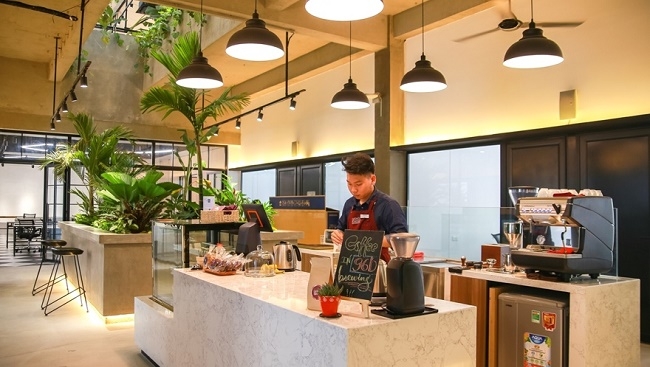Michelin leads the smart mobility revolution with data and AI
Michelin is undergoing a strong transformation by applying AI and smart analytic, helping lead the smart, safe, and sustainable mobility revolution in the Industry 4.0 era.




After a period of increasing in quantity, co-working space models tend to develop their quality, especially the projects in Ho Chi Minh city.

Having entered Vietnam at the beginning of 2012, co-working space has also appeared in many big cities across the country nowadays.
According to CBRE's 2017 statistics, the co-working space supply was developing at an average speed of 53% in the world and 58% in Vietnam per year.
This figure is expected to increase sharply in 2018 when the average occupancy rate at co-working spaces is all over 60%.
The development of co-working space in Vietnam is attributed to the phenomenal growth of the start-up spirit and the young generation. According to CBRE, the majority of co-working space users are 'Generation Y' (under 35), which is 67 per cent higher than the global average.
Compared with the previous generation, this group have a newer view of the working space. Accordingly, the office is not only a place for work but also for sharing and inspiring them to develop their abilities.
Recognizing the growing trend, many co-working space brands in Ho Chi Minh city has invested in the concept of new products as a response to the market demands.
In the mid-end segment, recently, Toong set the trend by launching Toong Minh Khai in District 3. According to Duong Do, CEO of Toong, this branch marks the evolution not only of Toong products but also of Ho Chi Minh city co-working space market.
Besides, in recent years, the “senior” brands in Ho Chi Minh city have also "redefined" co-working space by specialising the attached business activities.
Concepts for co-working space are being focused and renewed in the mid-range co-working market of Ho Chi Minh city. This has brought various options for different customers as well as somehow adapt the trends set by young workers.
In 2018, the co-working space market in Ho Chi Minh city recorded growth in the high-end segment when Regus, one of the big names in the world, launched the conference centre right in the Deutsches Haus. It marked the development as combined models of the high-end segment.
As one of the highest growth economies in Southeast Asia for MICE (meeting, incentives, conventions and exhibitions), Vietnam has significantly invested in the infrastructure.
According to McKinsey Consulting Group, in 2017, 17% of visitors came to Ho Chi Minh City for work reasons, higher than the regional average of 14-15%.
However, when hosting important MICE events, hiring traditional hotels encountered limits regarding professionalism.
The curiosity, noise or casual fashion of the guests seriously affect the formality of the event, which has created opportunities for professional conference service providers.
In general, the co-working space market in Ho Chi Minh city appeared later and the supply is still less than in Hanoi, but it tends to develop regarding models and quality. Hence, this market is expecting new stars in the future.
Michelin is undergoing a strong transformation by applying AI and smart analytic, helping lead the smart, safe, and sustainable mobility revolution in the Industry 4.0 era.
LG Innotek Vietnam Hai Phong secured a $200 million IFC loan as revenue slows, aiming to expand camera module production while meeting sustainability targets.
For Koen Soenens, Sales and Marketing Director at DEEP C, empathy is a compass that guides major deals, the way a leader builds a team, and the ambition to create a sustainable industrial zone that carries a Vietnamese identity.
Taseco Land has shifted its listing to HOSE and introduced a new upward-pointing arrow logo - a visual statement of its strategy to raise capital, expand its land bank, and strengthen its standing in Vietnam’s real estate sector
Located in the heart of Ho Chi Minh City, SAP Labs Vietnam is the second SAP Labs Network hub in Southeast Asia, following Singapore and is one of 20 countries that have SAP Labs globally.
Solar & Storage Live Vietnam event has been running since 2017 and the 2025 edition will be the biggest yet.